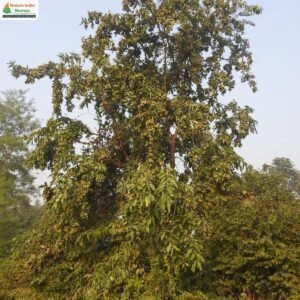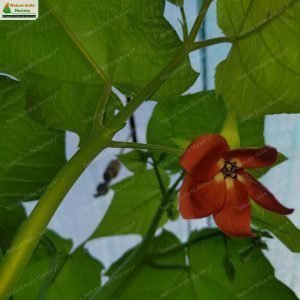Terminalia elliptica, commonly known as Indian Laurel or Asna, is a large deciduous tree that can grow up to 30 meters tall. It has a straight trunk with a diameter of up to 1 meter, while the bark is greyish-black and deeply fissured, giving it a distinctive crocodile-like appearance. The leaves are simple, alternate, and elliptic to ovate in shape, and the tree produces small, yellowish-white flowers that bloom in clusters. The fruit is a winged drupe, about 3-8 cm long. Native to southern and southeast Asia, including countries like India, Nepal, Bangladesh, Myanmar, Thailand, Laos, Cambodia, and Vietnam, the tree is commonly found in both dry and moist deciduous forests up to an elevation of 1000 meters.
The Indian Laurel tree’s ecological significance extends beyond its physical characteristics, as it provides a valuable source of food and habitat for various wildlife species, including insects and birds.
Habitat
Terminalia elliptica is native to southern and southeast Asia, including countries like India, Nepal, Bangladesh, Myanmar, Thailand, Laos, Cambodia, and Vietnam, and is commonly found in both dry and moist deciduous forests up to an elevation of 1000 meters.
Planting and Care
-
Propagation: Propagated through seeds, which should be soaked in water overnight to soften the hard outer coating before sowing.
-
Soil Type: Prefers well-drained loamy to sandy loam soil.
-
Watering: Requires regular watering during the initial stages of growth but is drought-tolerant once established.
Additional Information
-
Economical Values: Produces durable timber used in construction, furniture, and boat building.
-
Medicinal Use: The bark is used in traditional medicine for treating diarrhea and other ailments.
-
Ornamental Use: Valued for its attractive foliage and used as an ornamental plant in gardens and urban landscapes.
-
Wildlife Significance: The flowers attract various pollinators, including bees and butterflies. Birds feed on the nectar and insects found on the tree.











